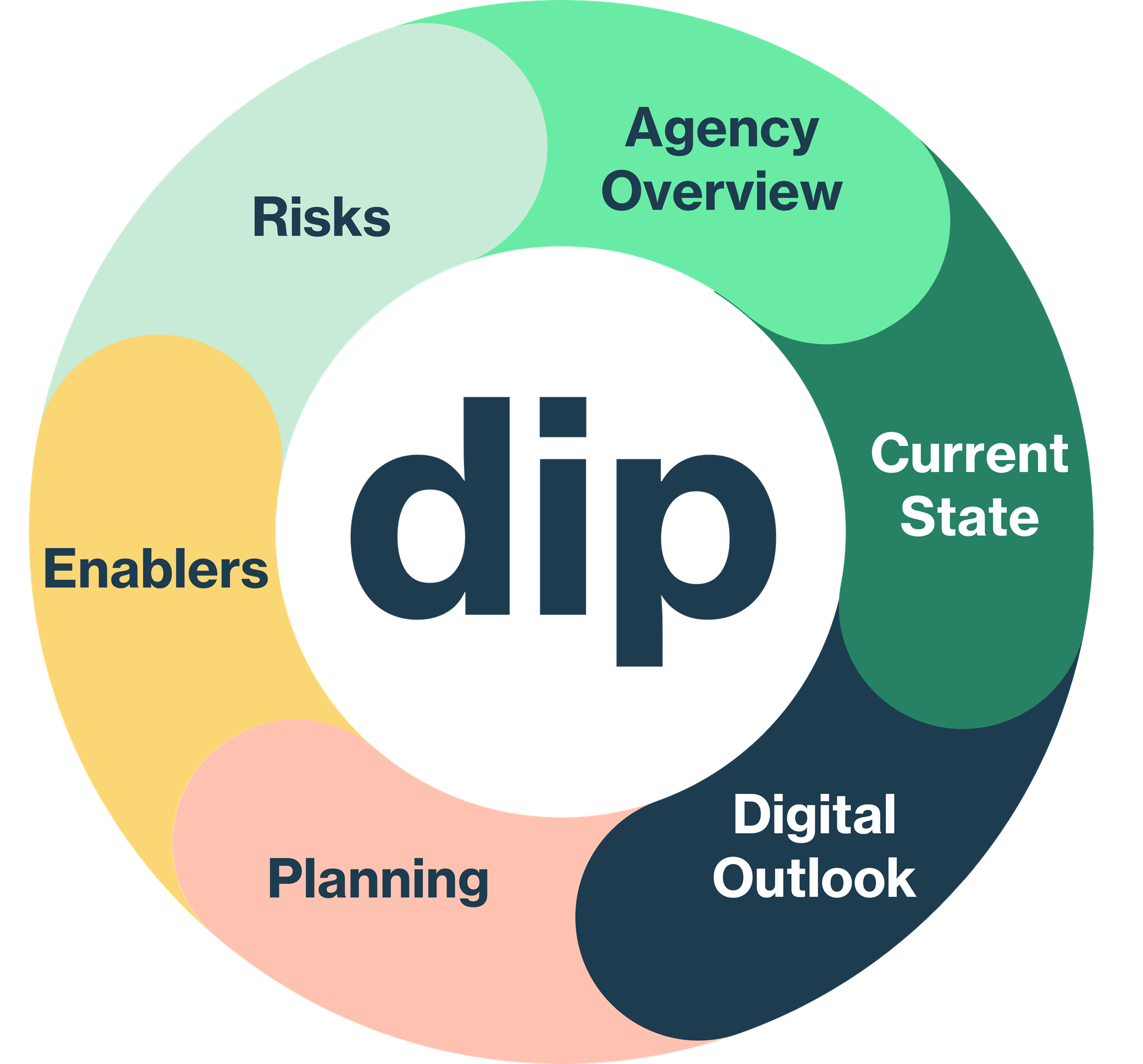-
-
-
The requirements for each criterion are listed below, along with a brief description and best practice guidance to meet the requirements.
-
Survey the policy and service landscape
See the bigger picture: Assess how the problems you identified play out in the broader policy and government service ecosystems. Use resources (such as the Australian Government Architecture and Delivering Great Policy Toolkit) to understand the landscape and the intentions of different policies.
Align to government priorities: Have a clear understanding of how your service will contribute to government priorities including the achievement of the Data and Digital Government Strategy 2030 vision.
Off -
Digital Investment Plan (DIP) Guidebook
Digital Investment Plan (DIP) overview
Overview
The Digital Transformation Agency (DTA) has developed this guidance to support government agencies to design and implement Digital Investment Plans (DIP).
Greater focus on short, medium, and long-term planning intends to instil a culture of future - focused strategic digital investment planning, leading to better digital investment outcomes.
Purpose of plan
The DIP is a resource to outline and define the short, medium, and long-term digital goals, initiatives, and outcomes of an agency's digital horizon. It also aligns digital investments with the strategic priorities, business needs and user expectations of the agency.
Authority
As part of the Data and Digital Government Strategy (the Strategy), Cabinet agreed that agencies need to implement short, medium, and long-term digital plans from 1 July 2025.
Applicability
This guidebook is applicable to all government agencies that are required to submit a DIP as part of the Budget process. The DIP should align with the agency's strategic plan, business case, and ICT strategy, and demonstrate how the agency contributes to the achievement of the Strategy.
Proposals assessed by the DTA as a part of the Digital and ICT Investment Oversight Framework (IOF) will have to be aligned with the DIP of the relevant agency.
Connect with the digital community
Share, build or learn digital experience and skills with training and events, and collaborate with peers across government.

